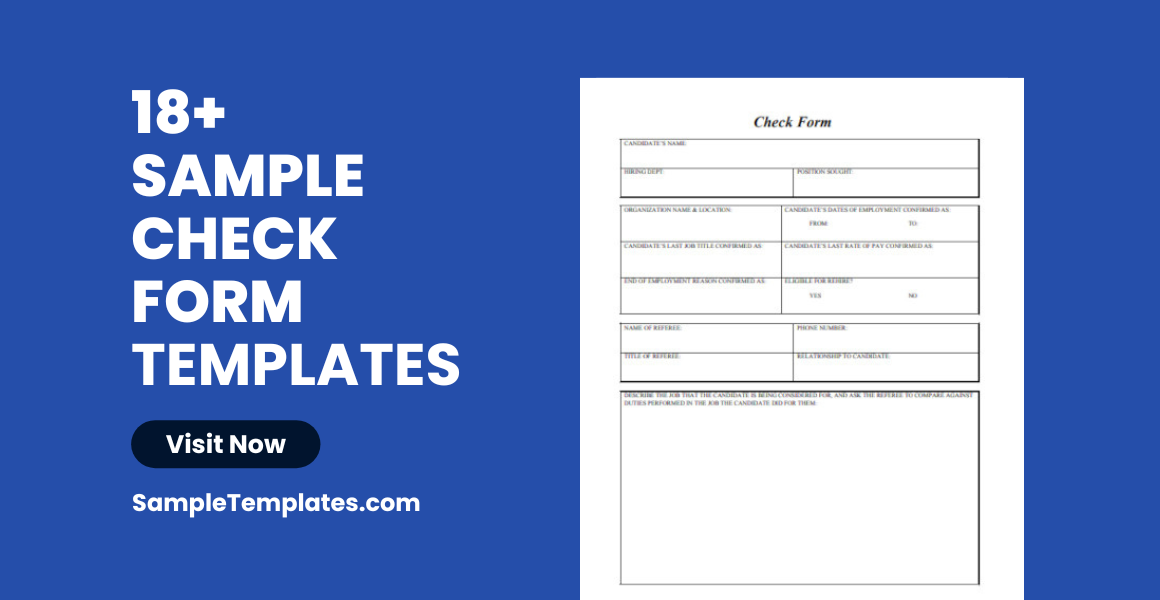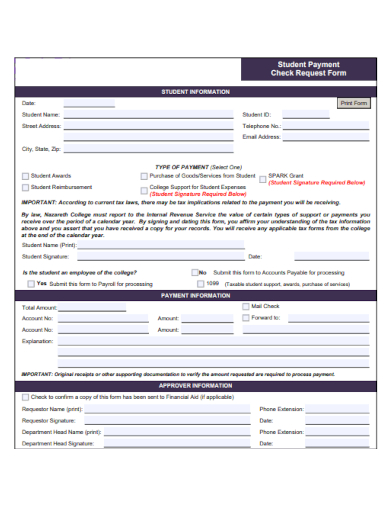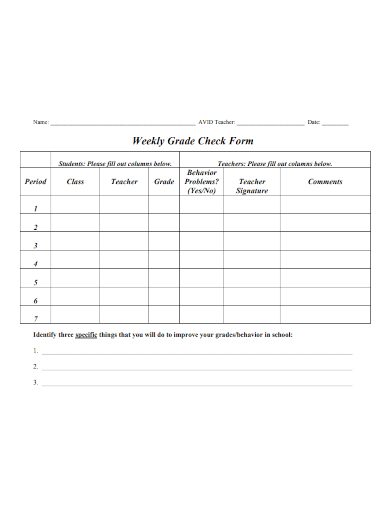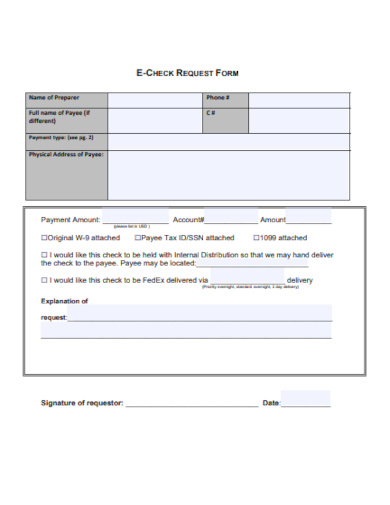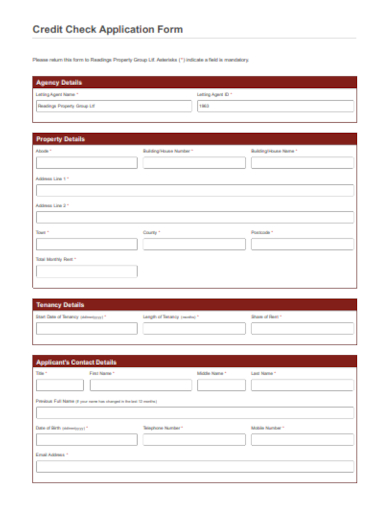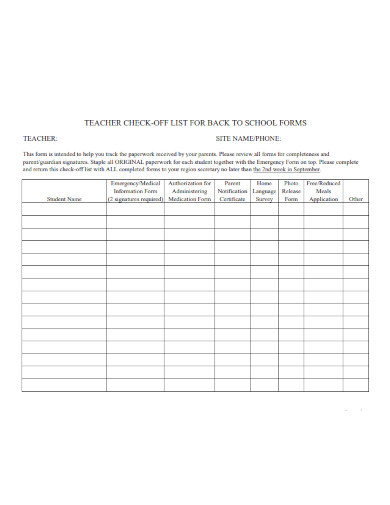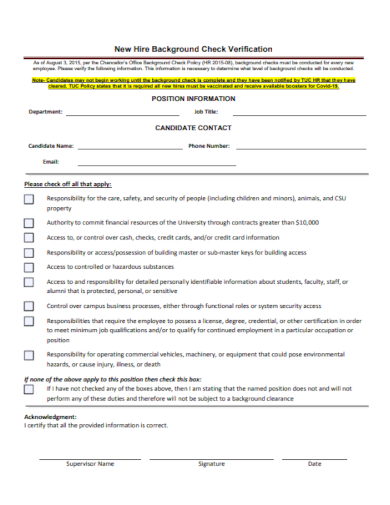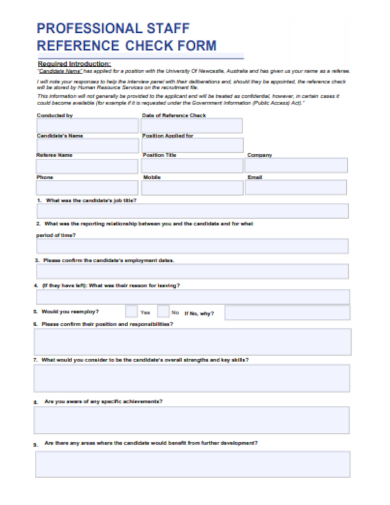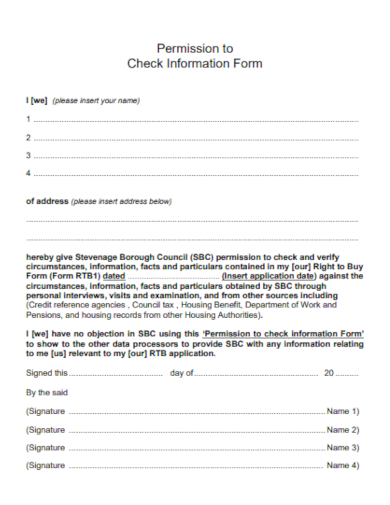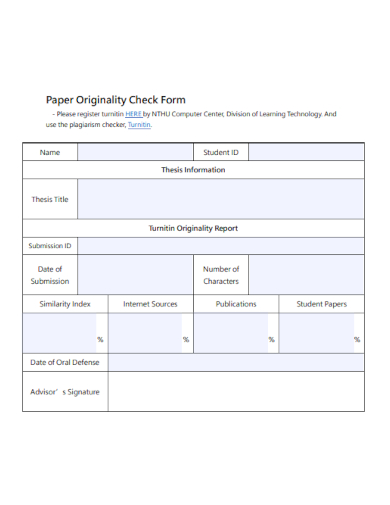In the intricate domain of financial transactions, the ‘Check Form’ is a fundamental instrument. Bridging the gap between digital processes and tangible process documentation, it ensures precise fund transfers while minimizing errors. From payment details to payer and payee information, a diligently crafted Check Form offers security and accountability. Join us as we delve into its features, design nuances, and the indispensable role it assumes in maintaining financial integrity and smooth operations.
In the intricate domain of financial transactions, the ‘Check Form’ is a fundamental instrument. Bridging the gap between digital processes and tangible process documentation, it ensures precise fund transfers while minimizing errors. From payment details to payer and payee information, a diligently crafted Check Form offers security and accountability. Join us as we delve into its features, design nuances, and the indispensable role it assumes in maintaining financial integrity and smooth operations.
18+ Check Form Samples
1. Sample Reference Check Phone Script Form Template

2. Sample Reference Check Form HR Template
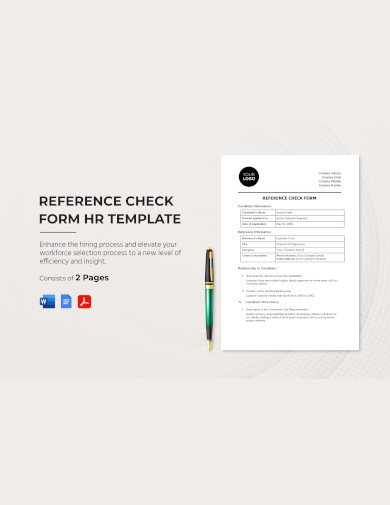
3. Sample Transport and Logistics Reference Check Form
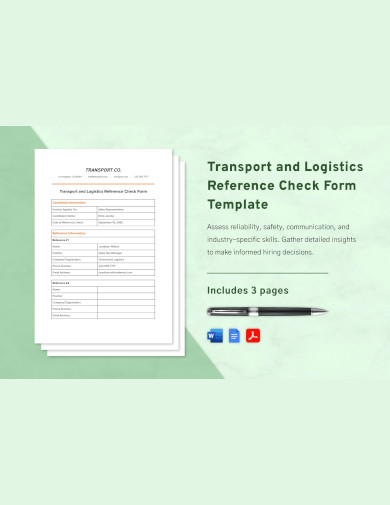
4. Sample School Staff Applicant Reference Check Form

5. Sample Personal Play Form Checks with Signed
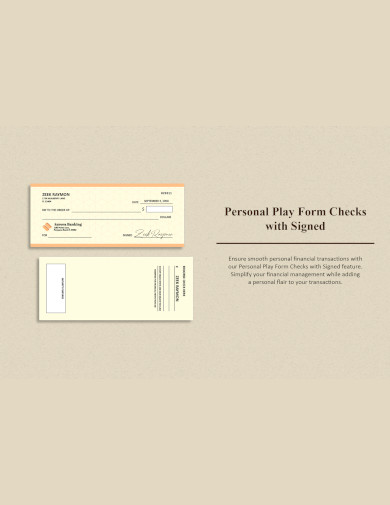
6. Sample Student Payment Check Request Form
What is a Check Form?
A check form, often simply referred to as a “check,” is a written instrument that instructs a bank or financial institution to transfer a specific amount of money from the account of the payer (or “drawer”) to the recipient (or “payee”). Serving as a sample paper-based payment method, checks have played a significant role in commerce and personal finance for centuries.
Historical Evolution of Check Forms
The concept of the check has been around for thousands of years. Ancient Romans are known to have used an early sample form of this payment system. Over time, the design and security features of checks have undergone significant changes to prevent fraud and misuse.
Components of a Modern Check Form
- Payor and Payee Details: Every check form prominently displays the names of the account holder (the payor) and the intended recipient of the funds (the payee).
- Date: This indicates when the check was written. Post-dating a check means writing a future date, which can be a method to delay the cashing of the check.
- Amount in Words & Numerals: To avoid discrepancies, the amount is written in both words and numerals. Any inconsistency between the two can render the check invalid.
- Signature Line: Without the account holder’s signature, a check is not valid. This is a crucial security feature.
- Memo or Notes Section: This is optional and allows the payor to sample note the purpose of the check or add additional details.
- Banking Details: This includes the bank’s name, branch, and sometimes even addresses. MICR codes, which facilitate electronic processing, are also printed at the bottom.
The Rise of Electronic Checks and Check Processing
With the advent of digital banking, the use of traditional paper checks has seen a decline. However, the concept remains intact with electronic checks. These are digital versions that function similarly but are processed faster and are more environmentally friendly.
Security Features in Modern Check Forms
- Watermarks: Subtle designs or patterns added to the paper to make photocopying or scanning difficult.
- Security Threads: Thin strips embedded into the paper, visible when held against light.
- Chemical Sensitivity: The paper used reacts to common chemicals, deterring unauthorized alterations.
- Microprinting: Extremely small text that is hard to replicate with standard scanning or photocopying equipment.
Advantages and Disadvantages of Using Check Forms
Advantages:
- Provides a paper trail and record of transactions.
- Doesn’t require electronic gadgets or internet access.
- Can be post-dated to control the timing of payment.
Disadvantages:
- Takes time to process compared to instant digital transactions.
- Carries a risk of being lost, stolen, or tampered with.
- Some businesses no longer accept checks due to the delay in funds transfer.
Why is a Check Form Necessary?
A Bridge Between Cash and Digital Transactions
Before the digital era’s dominance, not all transactions could be facilitated with cash, especially when large sums were involved or when the parties were not present in the same location. Check forms provided a secure and documented method to transfer funds from one account to another without physically transferring cash.
Credibility and Formality
A check form, coming from a recognized institution (the bank), carries with it a sense of formality and credibility. For businesses, issuing a check can symbolize stability and trustworthiness. In personal transactions, a check can be more credible than handing over a wad of cash, especially for significant amounts.
Allows for Deferred Payments
Post-dated checks allow the payer to make a commitment for payment at a future date. This is particularly useful in scenarios like renting a property, where the landlord might require post-dated checks covering several months’ rent. The landlord has the assurance of payment, and the tenant doesn’t need to make manual payments each month. You can also see more templates like Background Check Forms.
Provides a Clear Paper Trail
Each check form has a unique check number, and when processed, it leaves a clear trail in the bank statements of both the payer and the payee. This makes it easier to track payments, resolve disputes, and maintain clear financial records. For businesses and individuals alike, this paper trail is essential for accounting and tax purposes.
Flexibility in Payment Options
Checks provide flexibility. A person can choose to make a partial payment, set up recurring payments, or even stop payment if needed (though this might come with certain penalties or fees). This flexibility can be especially useful in scenarios where the exact amount due might not be known in advance or when there are variable payments.
Enhanced Security Compared to Cash
Transferring large amounts of money in cash can be risky. There’s the threat of theft, loss, or damage (like fire or water damage). Checks eliminate this risk. Even if a check is lost or stolen, the original issuer can usually stop payment on it, ensuring that the funds remain secure. You can also see more templates like Sample Check Request Forms.
How To Fill Out a Check Form?
1. Write the Date
- In the top right corner of the check, you’ll find a space or line labeled “Date.” Here, write the current date in the format preferred by your country (e.g., MM/DD/YYYY in the US).
- Remember, you can post-date a check, meaning you can write a future date if you intend for the check to be cashed or deposited after that date.
2. Fill in the Payee
- On the line labeled “Pay to the Order of,” write the full name of the person or organization you’re paying.
- If you’re not sure of the name, you can write “Cash,” but this is less secure because anyone can cash or deposit that check.
3. State the Amount in Numerals
- In the small box next to the payee line, write the amount you’re paying in numerals. For instance, if you’re writing a check for fifty dollars and fifty cents, you’d write: “50.50.”
4. Write the Amount in Words
- On the line below the payee, write out the same amount, but this time in words. Using our previous example, you’d write: “Fifty dollars and 50/100.”
- If there are no cents, you can write “and 00/100,” or simply draw a line to indicate no cents.
5. Memo or For Line (Optional)
- This is a space where you can note the reason for the payment or any other details. For instance, if you’re paying rent, you might write: “May 2023 Rent.”
- While this field is optional, it’s a good way to keep track of why you issued the check.
6. Sign the Check
- On the bottom right line or space labeled “Signature,” sign your name using the same signature you provided to your bank when you opened your account.
- Without this signature, the check will not be valid.
7. Check Number and Banking Details
- Note that every check has a unique check number. This number is usually located at the top right corner and is pre-printed.
- The bottom of the check contains the bank’s routing number, your account number, and the check number again. Do not alter these numbers as they are essential for processing.
7. Sample Background Check Authorization Form
8. Sample Weekly Grade Check Form Template
9. Sample Pre-Employment Reference Check Form
10. Sample E-Check Account Request Form
11. Sample Credit Check Application Form
12. Sample Back To School Check Form
13. Sample Business Check Order Form
14. Sample Background Check Consent Form
15. Sample New Hire Background Check Verification Form
16. Sample Professional Staff Reference Check Form
17. Sample Permission Check Information Form
18. Sample Paper Originality Check Form Template
19. Sample Check Tracker Form Template
How do you Create a Check Form?
Creating a check form, also known as a “checkbox form”, is a common need in both online and offline contexts. Check forms are beneficial when users are given multiple options and can select one or several of those options. You can also see more templates like Check Samples. Here’s a step-by-step guide to creating a check form:
Step 1: Identify the Purpose Determine why you need the check form. Is it for a survey, a sign-up sheet with multiple preferences, a feedback form, or another purpose? Knowing the intent will guide the form’s content and design.
Step 2: List the Options Clearly list out all the options you want to provide to the users. Ensure the options are distinct and self-explanatory. If necessary, provide a sample brief description or use tooltips for online forms.
Step 3: Design the Layout Whether you’re creating a digital or paper form, ensure the layout is:
- Organized: Group related options together. For instance, if you’re asking about dietary preferences, group all food-related options.
- Spaced: Ensure there’s enough space between checkbox options so users don’t accidentally tick the wrong box.
- Legible: Use a clear and readable font. For online forms, ensure it’s accessible on various devices.
Step 4: Implement the Check Form For a physical paper form, this involves printing. For a digital form:
- Web-Based: Use HTML with the
<input type="checkbox">element for each option.<label> <input type="checkbox" name="preference" value="option1"> Option 1 </label> - Software Application: Use the development platform’s checkbox UI component. For instance, in Windows Forms for .NET, you’d use the
CheckBoxcontrol.
Step 5: Collect and Process Responses Once users submit their selections:
- Paper Form: Manually tally or input the results into a digital format for sample analysis.
- Digital Form: Use backend processing to capture user responses. If it’s a web form, data can be sent to a server-side script using methods like POST or GET. Store this data in a database or another storage solution for analysis or further action.
Step 6: Validation and Feedback (For Digital Forms) If it’s crucial for users to select at least one option or if there’s a maximum limit:
- Client-Side Validation: Use JavaScript to validate user input before form submission. Inform the user if they haven’t made a selection or if they’ve selected too many options.
- Server-Side Validation: Always validate user input on the backend to ensure data integrity.
Step 7: Test and Iterate Before the official release:
- Pilot Test: Have a few people fill out the professional form to check for clarity and any potential issues.
- Feedback: Incorporate feedback and make necessary adjustments.
In Conclusion, While the digital age continues to redefine how we handle money, the check form remains a testament to the evolution of trade and transactions over centuries. Whether you prefer the tactile feel of paper or the swiftness of electronic transactions, understanding the intricacies of the check form is crucial for both personal and business financial management. You can also see more templates like Background Check Consent Forms.
Related Posts
FREE 10+ Sample Media Release Forms in MS Word | PDF
13+ FREE Contractor Evaluation Form Samples in MS Word | PDF
FREE 9+ Sample Customer Complaint Form Examples in PDF | MS Word
FREE 8+ Sample Leave Request Forms in MS Word | PDF
FREE 12+ Sample Deed of Gift Forms in PDF
FREE 9+ Sample Photography Consent Forms in MS Word | PDF
FREE 11+ Sample Parts Order Forms in MS Word | PDF
FREE 13+ Requisition Form Samples in PDF | MS Word
FREE 17+ ACH Form Samples in PDF
FREE 9+ Sample Vendor Evaluation Forms in MS Word | PDF
FREE 17+ W2 Form Samples in PDF
FREE 23+ Minor Form Samples in MS Word | PDF
FREE 9+ Sample Students Feedback Forms in PDF | MS Word
FREE 21+ Notification Form Samples in MS Word | Outlook | PDF
FREE 7+ Sample Audition Forms in PDF | MS Word
